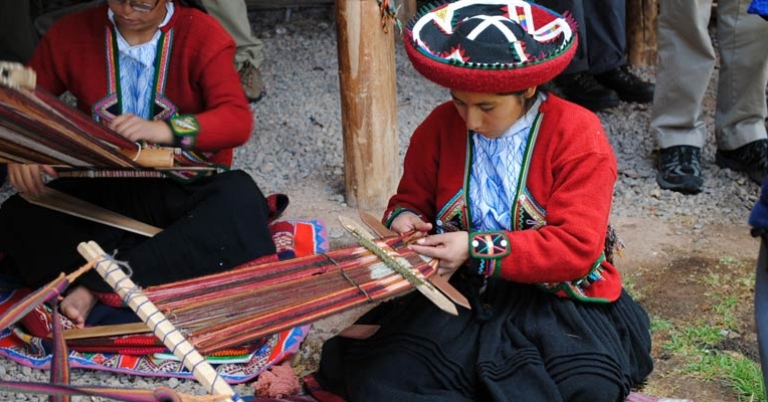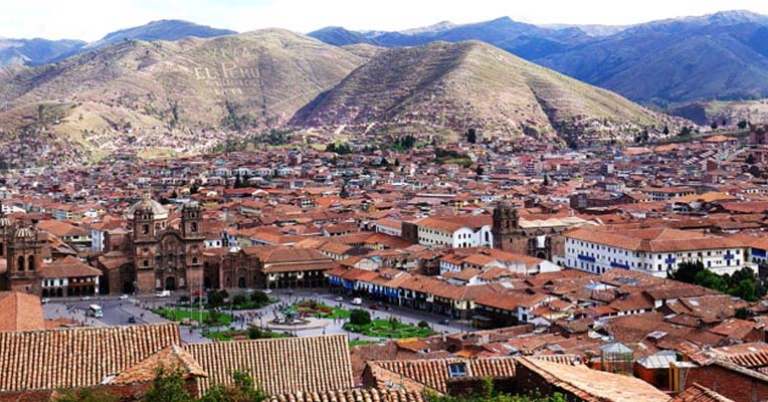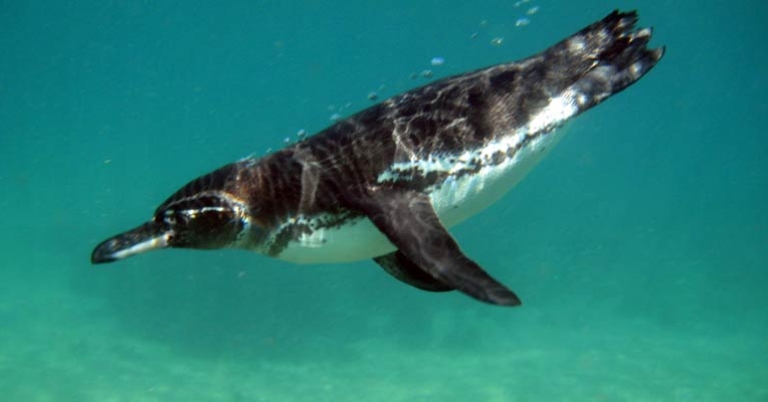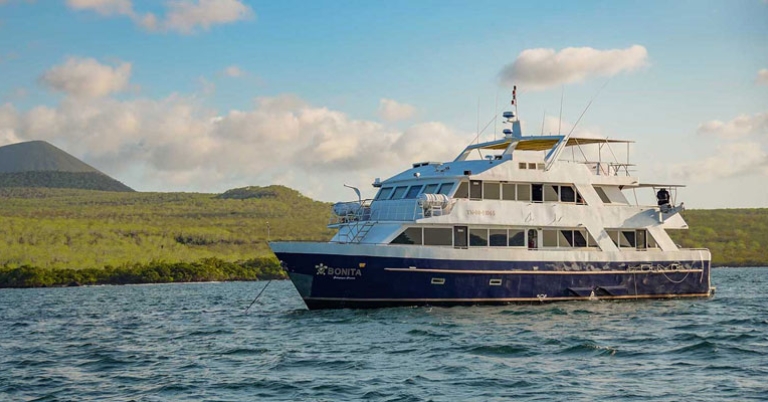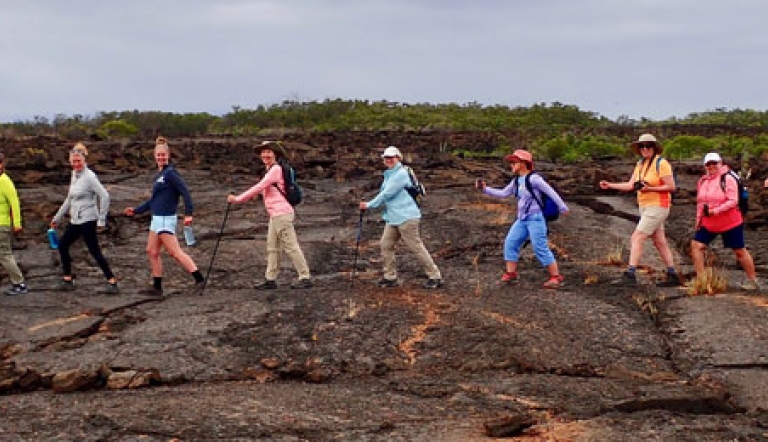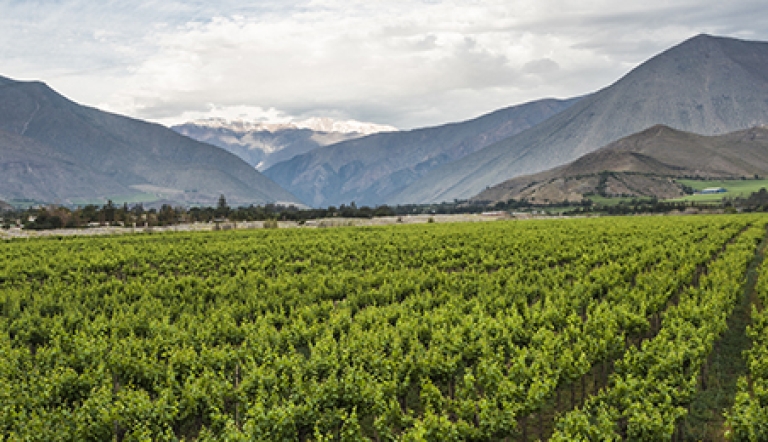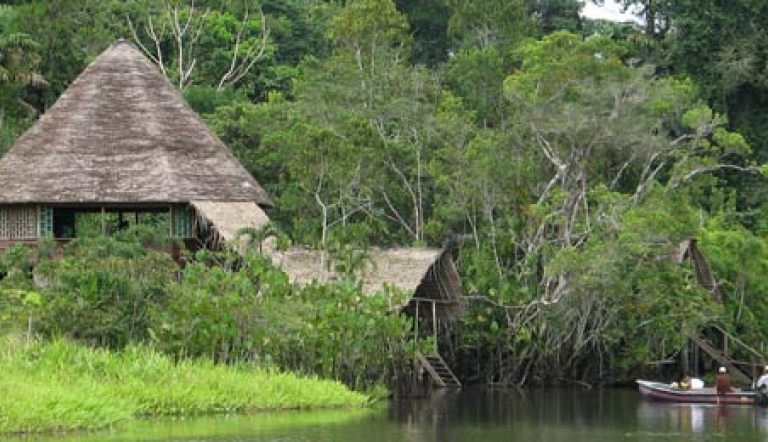Adventure Galápagos and the Mysteries of Machu Picchu
About this trip
 Get ready for the experience of a lifetime! This compelling itinerary explores two “must-see” destinations, the Galápagos Islands and Machu Picchu, from a fresh perspective. Begin your 16-day adventure exploring the highlights of Peru, including the archaeological site of Sacsayhuaman, the salt mines of Maras, the colonial buildings of Cusco and Lima, and of course, Machu Picchu. Continue your journey by discovering the heritage, sustainability, and conservation of the Galápagos archipelago during a 6-night cruise through the western islands of Santa Cruz, Santiago, Isabela, and Fernandina. Plus, you’ll have time to explore Quito, Ecuador’s capital and a UNESCO World Heritage Site.
Get ready for the experience of a lifetime! This compelling itinerary explores two “must-see” destinations, the Galápagos Islands and Machu Picchu, from a fresh perspective. Begin your 16-day adventure exploring the highlights of Peru, including the archaeological site of Sacsayhuaman, the salt mines of Maras, the colonial buildings of Cusco and Lima, and of course, Machu Picchu. Continue your journey by discovering the heritage, sustainability, and conservation of the Galápagos archipelago during a 6-night cruise through the western islands of Santa Cruz, Santiago, Isabela, and Fernandina. Plus, you’ll have time to explore Quito, Ecuador’s capital and a UNESCO World Heritage Site.
Highlights
- Have a traditional lunch with members of a local family in the Sacred Valley, take part in an ancient Pachamama ceremony led by a shaman, and visit the community of Chincheros, famous for its colorful woven textiles.
- Visit the Sacred Valley of the Incas and explore the mysterious ruins of Machu Picchu.
- Experience the Galápagos archipelago by private yacht on a 6-night cruise aboard the M/Y Bonita to 4 islands, motoring by night.
- Visit the Charles Darwin Research Station and learn about the center's ongoing conservation initiatives.
- Snorkel among iconic wildlife of the Galápagos, like sea lions, turtles, marine iguanas, and Galápagos Penguins.
$7,995
Per person
About this price
Land cost only. Does not include round-trip airfare to and from destination.
What makes us different
Wildlife up-close
Service anytime
Cultural Discovery
Low stress travel planning
Expert guides
Flight arrangements
Daily Itinerary
Print ItineraryLima
Sacred Valley
Sacred Valley
Machu Picchu
Lima
Quito
Quito
Santa Cruz
Galapagos
Galapagos
Galapagos
Galapagos
Galapagos
Galapagos
Quito
Departure
Pricing
Print Pricing$7,995
Per person
About this price
Land cost only. Does not include round-trip airfare to and from destination.
What's Included
- Accommodations with private bathrooms
- Activities and meals as mentioned in itinerary
- All tips
- Full time guide per region for the duration of your program
- Galapagos National Park fees
- INGALA card
- Internal flights relevant to itinerary
- Non alcoholic beverage with meals
- Snorkel gear
What's Not Included
- Items of personal nature
- Carbon Offset
- International airfare
- Travel Insurance
Pricing Details
A $1000 per person deposit and enrollment form is due to hold your space on this trip. This deposit is refundable 200 days prior to departure excluding a $200 cancellation fee. Cancellations after this date will result in loss of full deposit.
Please note: Your participation as a traveler indicates acceptance of Holbrook Travel’s Covid-19 protocols in place at time of travel.
Holbrook Travel strongly recommends the purchase of travel insurance for medical emergencies while traveling and to protect your investment. Please note the purchase of Cancel for Any Reason Coverage or to exclude pre-existing conditions with Trip Cancellation coverage may require policy purchase within 10-14 days of your initial deposit, depending upon the provider.
Final payment due date: August 16, 2022
Travel Info
Print Travel InfoActivity Level
Moderate to Active
Trails are relatively easy to moderately challenging with uneven terrain; island transfers can be in rough waters. Expect to walk up to three miles per day and be on one’s feet for up to three hours at a time. Highest elevation: 11,152 ft.
Entry & Exit Requirements
Peru
U.S. and Canadian citizens must have a valid passport to enter Peru. Passports must be valid for at least six months after the date of departure. Tourists must provide evidence of return or onward travel.
For visits of fewer than 90 days, you will be issued a tourist card, called the Tarjeta Andina de Migración (TAM), upon arrival in Peru. It is important not to lose this document, as it can be time consuming and inconvenient to replace.
If you are not traveling with a U.S. passport, please check with the Embassy of Peru for the requirements based on your nationality.
Ecuador and Galápagos
U.S. and Canadian citizens must have a valid passport to enter Ecuador. Passports must be valid for at least six months after the date of departure.
For visits fewer than 90 days, visas will be issued upon arrival in Ecuador. Tourists may be required to provide evidence of return or onwards travel.
If you are not traveling with a U.S. passport, please check with the Embassy of Ecuador for the requirements based on your nationality.
Health Information
Immunizations
The Centers for Disease Control recommends that all travelers be up to date on routine vaccinations such as measles-mumps-rubella (MMR) vaccine, diphtheria-pertussis-tetanus vaccine, varicella (chicken pox) vaccine, and your yearly flu shot before every trip.
There are no vaccinations required for entry into Peru or Ecuador.
Some physicians recommend that travelers get hepatitis A and typhoid vaccines before visiting Peru or Ecuador.
Yellow fever is a risk in certain parts of these two countries. The CDC recommends the yellow fever vaccine if you are traveling to these areas.
Please consult your physician for additional information and recommendations based on your individual circumstances.
Malaria
The CDC warns that travelers to South America may be at risk for exposure to malaria. Malaria is caused by a parasite found in Anopheles mosquitos, which are active from dusk until dawn. Prevention is twofold: the use of anti-malarial drugs and the prevention of insect bites. If you choose to use an anti-malarial drug, as recommended by the CDC, see your physician for a prescription.
Chikungunya
In December 2013, French Guiana reported locally transmitted cases of chikungunya for the first time in South America. Local transmission means that mosquitoes in the area have been infected with chikungunya and are spreading it to people. CDC recommends that travelers to the South America area protect themselves against mosquito bites.
Zika Virus
Locally transmitted cases of Zika virus have previously been reported in Peru and Ecuador. Local transmission means that mosquitoes in the area have been infected with Zika and are spreading it to people. The CDC recommends that travelers to Peru and Ecuador protect themselves from mosquito bites. As a precaution, the CDC advises women who are pregnant to consider postponing travel to any area where Zika virus transmission is ongoing. Transmission risk is reduced in areas above 6,500 feet in elevation.
Sea Sickness
If you’re prone to feeling queasy, we suggest you consult your physician for advice on the best ways to prevent motion sickness. We recommend that you avoid showering when the boat is in motion and remain cautious of activities while passing through rocky waters.
Altitude Sickness
Upon arrival at locations of high elevation, shortness of breath and a pounding heart are normal responses to the lack of oxygen in the air. However, for some visitors, these symptoms can deteriorate into altitude sickness. Headache, extreme tiredness, dizziness, nausea, and loss of appetite are standard symptoms. Staying hydrated and well rested is important to adjust to the altitude. Avoiding heavy, fatty foods and alcohol in the days before arriving to altitude can help. Over-the-counter medications are also available to help prevent or alleviate symptoms. It’s advisable to avoid sleep medications, as they can slow breathing and respiration, which aid in getting the blood oxygenated while sleeping. Participants who take blood pressure medications should discuss this with their doctor as the medication can drop pressure too low at times.
Sun Exposure
The effects of the sun can be damaging to the eyes and skin. Spending time outdoors exposes you to the sun’s harmful ultraviolet (UV) rays, even on cloudy days. To protect yourself from the sun, use a broad spectrum sunscreen of at least SPF 15, protect skin with clothing, wear a wide-brimmed hat and sunglasses, and drink plenty of fluids.
Physical Fitness Requirements
Visitors to Machu Picchu and the Galápagos Islands should be in good health and capable of walking over rocky, uneven, and potentially slippery terrain. Regardless of your physical stamina, bringing a walking stick will help you maintain your balance.
Resources
Print ResourcesVessel
Video: Galápagos Fitness Information
Video: Snorkeling in the Galapagos
Suggested Packing List
Everyone has personal preferences when it comes to packing; for this reason, the information below is offered as a general guide and not a definitive list. You know yourself best: Use your discretion and pack what you think will serve you, based on your personal preferences and specific itinerary.
You may find many of the items below in our Gear Store.
CLOTHING
Casual, comfortable clothing is suitable for most activities. You may wish to bring a slightly nicer outfit or two (eg sundress, polo shirt) if your itinerary includes dinners out or more formal activities.
Bring enough clothing suitable for the length of your program. If you prefer to pack light, note that many hotels offer laundry services (at additional cost). If you plan to hand-wash items, remember that humidity may delay drying time.
This itinerary visits a variety of climates and elevations. At Machu Picchu, average temperatures in November range from the 40s to the low 70s (°F). November marks the beginning of the transition to the rainy season, and rain is not uncommon. Meanwhile, in the Galápagos, November is temperate, with temperatures reaching into the high 70s during the day. Rainfall is infrequent.
Pack clothing that can be worn in layers to adapt to weather changes throughout the day. Consider packing a warm underlayer, as well as a warm, protective outer layer. Clothing that wicks away moisture and dries quickly is recommended.
- A combination of short-sleeved and lightweight, long-sleeved shirts for sun and mosquito protection
- Shorts
- Lightweight, quick-drying long pants for sun and mosquito protection
- Medium to heavy weight cotton pants for the highlands
- Undergarments
- Sleepwear
- Lightweight jacket or sweater/sweatshirt
- 1-2 bathing suit(s)
- Socks – Bring extra pairs
- Shoes – Consider your specific itinerary when choosing footwear. For most programs, you’ll likely want at least one pair of comfortable, closed-toe walking or hiking shoes suitable for forest hikes and walking over cobblestones or other uneven terrain. Sturdier hiking boots may be appropriate for more rugged itineraries. In addition, many participants opt for a pair of sturdy sport-strap sandals (e.g. Keens, Tevas, or similar) and/or casual flip-flops or sandals. In the Galápagos, a pair of aqua socks, reef walkers, or water shoes is recommended.
- Lightweight rain jacket, hooded poncho, and/or windbreaker
- Visor or wide-brimmed sun hat
- Bandana, scarf, or Buff-style headwear
- Wetsuit (shorty wetsuits are available to rent, but you may prefer your own)
Personal toiletries
Pack toiletries based on your personal preferences and habits. Below are just a few recommendations to keep in mind.
- Shampoo, conditioner, lotion, deodorant/antiperspirant , etc. – If possible, avoid strong fragrances if you are sensitive to insect bites.
- Soap and washcloth or a small, quick-drying microfiber towel – Washcloths are not standard in all hotels. If you normally use a washcloth, you may wish to bring one from home.
- Hairbrush, comb, hair ties, shower cap. Most—but not all—hotel rooms provide a hair dryer, but you may wish to bring one from home.
- Toothbrush and toothpaste
- Razor
- Ear plugs, especially if you are a light sleeper
- Feminine hygiene products
- Insect repellent with DEET or picaridin
- Reef-safe sunscreen and lip balm with SPF
- Aloe vera gel
- A travel pack of tissues – also useful as napkins or toilet paper if needed
In addition to your personal toiletries, it is useful to pack a small medical kit, which you can easily prepare. Helpful items might include: bandages, antihistamine, a pain reliever, motion sickness and/or altitude sickness medication (if you are prone to either), anti-diarrhea medicine, individually wrapped pre-moistened towelettes and/or hand sanitizer, antibiotic ointment, anti-fungal cream, moleskin for blisters, eye drops, tweezers, a mini sewing kit, and an extra pair of disposable contact lenses or eyeglasses if you wear them.
MISCELLANEOUS
Remember to pack valuables such as your passport, cash/credit cards, and medications in your carry-on luggage.
- Passport and photocopies of all travel documentation
- Personal insurance card and travel insurance information
- Money – ATM/credit card, traveler's checks, and/or cash; small bills in good condition are recommended
- Prescription medicines (if applicable), with a copy of the prescription
- Yellow fever certificate (if required; only if arriving from a country where yellow fever transmission is a risk)
- Sunglasses with strap
- Small day pack for hikes and excursions
- Flashlight and/or head lamp
- Travel alarm clock or inexpensive waterproof wristwatch with alarm – Not all hotels provide alarm clocks.
- A pocket calculator or phone to assist with conversions and currency exchange
- Binoculars with lens cleaner
- Camera and related equipment, such as charger, lenses, and extra memory cards
- Reusable water bottle
- Non-perishable snacks
- Pocket-knife or multipurpose tool - Pack in your checked luggage
- Zip-top style bags – useful for packing toiletries, sorting clothing, storing damp or muddy shoes, or as a dry bag for protecting electronics)
- Notepad or travel journal and pen
- Music or reading material for down time, long bus drives, or on the airplane, and a portable bright light to read by
- Walking stick with rubber tip (folding or collapsible, for walking on rough and uneven terrain)
- Swim mask/fins (snorkeling equipment is available to rent and often included for most groups)
- A small quantity of laundry detergent if you’ll be washing clothing by hand
- Travel-size umbrella – Some people find this unwieldy to carry, while others find it offers better protection than a rain jacket alone.
- Money belt
- Converter and adapter for electronics
- Chargers for electronics
- Beach towel or small blanket
In addition to your toiletries, it is useful to pack a small medical kit, which you can easily prepare. Helpful items include bandages, mosquito repellant wipes, antihistamine, a pain-reliever, individually-wrapped moist wipes, anti-diarrhea medicine, anti-fungal cream, and an extra pair of disposable contact lenses or eyeglasses if you wear them.
PLEASE NOTE: There is a weight limit of 11 pounds for luggage on the train transfer to Machu Picchu. Please be prepared to pack an overnight bag for the night spent in the Machu Picchu area. Your bag must weigh no more than 11 pounds and measure no more than 62 linear inches / 157 cm (length + height + width). You can safely store excess luggage at the prior night’s hotel, or at one of our field offices.
PLEASE NOTE: There is a weight limit of 50 lbs of checked luggage and one carry-on per person for your flight to the Galápagos Islands. Your luggage and/or carry-on may be subject to inspection by the Ecuadorian government in an effort to prevent the introduction of foreign plants and animals to the Galápagos Islands.

Questions
For more information, please contact Dr. Jean Anne Hattler, Director, Alumni and Friends Travel Program: 412-396-1431 or hattlerj@duq.edu.

